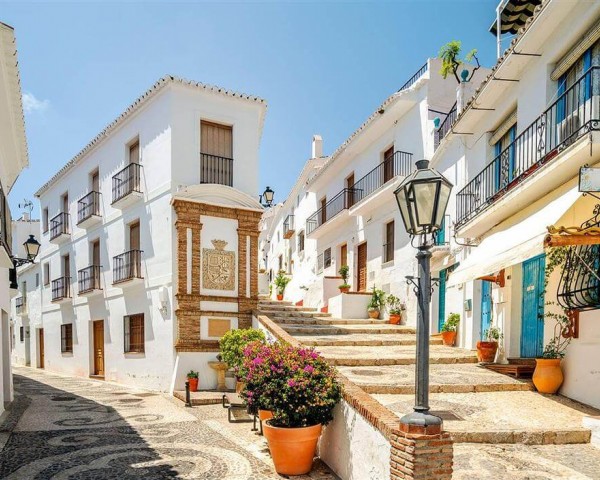Tourism in Spain consolidated its recovery last year, with activity similar to that recorded before the pandemic plunged it into its worst crisis, but still below the level of 2019, a record year for arrivals from abroad. A total of 67.43 million visitors arrived in Spain until last November, 85% of those received in the first 11 months of three years ago (79.20 million), according to the National Statistics Institute (INE).
The improvement comes despite the impact that the rise in prices has had on the purchasing power of visitors and which can be seen in their average expenditure: this reached 1,241 euros in November, 18% above that recorded in 2019 (1,055 euros), despite the fact that the average duration of the trip was reduced from 8.5 days three years ago to the current 7.5.
The desire to travel after months of restrictions due to the pandemic remains despite the economic uncertainty. Tourism began to emerge from its complicated situation in the summer of 2021 thanks to domestic tourism and, from 2022, began to recover more powerfully thanks to the return of international tourism, especially British and German.
In November, 4.34 million tourists arrived in Spain, which is 29% more than last year and recover 93% of the travelers of the same month of 2019, according to data published last week.
With one month to go until the end of the year, the forecasts of the Ministry of Industry, Trade and Tourism point to the year ending with 71.5 million tourists, 85% of the 2019 level, despite the negative impact that the inflationary escalation (rising energy prices, hotels and mortgages, among other factors) has had on the pockets of citizens. According to Minister Reyes Maroto, “the containment of inflation in these last months of the year together with the Government’s measures to deal with the impact of the war in Ukraine, are facilitating the arrival of tourists to our country, which makes us optimistic about the year 2023″.
Tourists arriving have to face higher spending due to inflation. The rise in the cost of stays can be seen in the average daily expenditure, which amounted to 165 euros in November, compared to 124 euros in 2019. Between January and November, the cumulative spending totaled 81.82 billion euros, 94% of what was paid in before the pandemic. Maroto forecasts that 2022 will end with 87.1 billion in total spending, a relief for the stressed income statements of a sector that has been key to the evolution of the economy in a very complicated year.
The main source markets for Spanish tourism continue to be the United Kingdom, France and Germany. Between January and November, 14.4 million British tourists visited country, 270% more than last year, although still far from the 17 million in 2019. France and Germany were the next markets with the most tourists visiting Spain, with 9.4 and 9.3 million travelers, respectively.
As a destination, the Canary Islands were in November the main point of arrival of foreign tourism, with 27.3% of the total, followed by Catalonia (22.2%) and Andalusia (13.7%). In the first 11 months of 2022, the autonomous communities that have received the most tourists are Catalonia (with almost 14 million), the Balearic Islands (with almost 13.1 million) and the Canary Islands (with more than 11.1 million).
The strength of the business is distributed among all types of tourism – sun and beach, urban, cultural and nature – and among all the autonomous communities, according to the Spanish Confederation of Hotels and Tourist Accommodations (CEHAT). A recent report by the hotel employers’ association, with data from last fall, shows that all the sector’s activity and profitability indicators are positive: average profit per available room was €113 in the months of September and October, 13% above 2019 levels. Occupancy was also 15% above and average hotel prices reached €115, up 15%.




